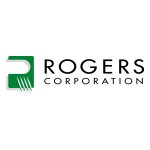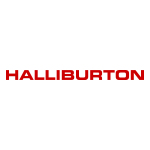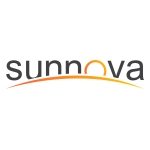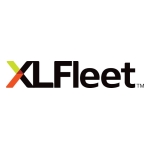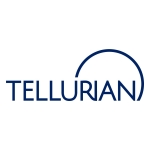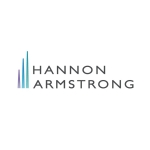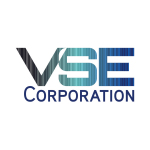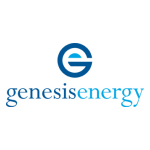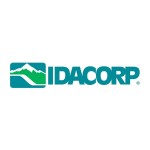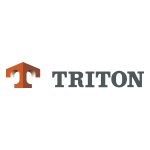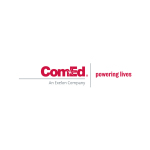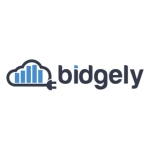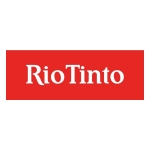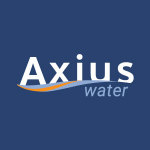In Colombia:
199% Reserve Replacement Grew Certified 2P Reserves to 141 Million Boe With Net Present Value (After Tax) of $2.1 Billion
Exploration Resources Over 750 Million Barrels in Colombia
BOGOTA, Colombia--(BUSINESS WIRE)--GeoPark Limited (“GeoPark” or the “Company”) (NYSE: GPRK), a leading independent Latin American oil and gas explorer, operator and consolidator with operations and growth platforms in Colombia, Ecuador, Chile, Brazil and Argentina, today announced its independent oil and gas reserves assessment, certified by DeGolyer and MacNaughton (D&M), under PRMS methodology, as of December 31, 2020.

All reserves included in this release refer to GeoPark working interest reserves before royalties paid in kind, except when specified. All figures are expressed in US Dollars. Definitions of terms are provided in the Glossary on page 11.
Year-End Certified 2020 D&M Oil and Gas Reserves and Highlights:
Building on GeoPark’s core base Llanos 34 block (GeoPark operated, 45% WI), adding Amerisur’s growing production and reserves, and following a limited 2020 work program with a focus on lower risk projects, the Company reports:
Colombia Reserves
-
PD Reserves: Proven developed (PD) reserves in Colombia increased 13% to 48.0 mmboe, with a PD reserve life index (RLI) of 3.9 years
-
1P Reserves: Proven (1P) reserves in Colombia remained steady at 95.2 mmboe, with a 1P RLI of 7.8 years. Net present value after tax discounted at 10% (NPV10 after tax) of 1P reserves decreased by 6% to $1.5 billion due to a lower price deck
-
2P Reserves: Proven and probable (2P) reserves in Colombia increased 9% to 141.0 mmboe, with a 2P RLI of 11.6 years. NPV10 after tax of 2P reserves increased by 3% to $2.1 billion
-
3P Reserves: Proven, probable and possible (3P) reserves in Colombia increased 28% to 216.4 mmboe, with a 3P RLI of 17.8 years. NPV10 after tax of 3P reserves increased by 17% to $3.1 billion
-
CPO-5 Block Reserves: Gross 2P and 3P reserves in the CPO-5 block (GeoPark non-operated, 30% WI) of 70.5 mmbbl and 167.0 mmbbl, respectively, reflecting the significant potential of the existing Indico and Mariposa light oil fields in the CPO-5 block - with net 2P and 3P reserves of 21.1 mmbbl and 50.1 mmbbl, respectively
-
Reserve Additions and Replacement Ratios: After record production of 12.2 mmbbl, the Company added 17.8 mmboe of PD reserves and 24.2 mmboe of 2P reserves, achieving 146% and 199% reserve replacement of PD and 2P reserves, respectively
Consolidated Reserves1
-
PD Reserves: PD reserves increased 12% to 58.5 mmboe, with a PD RLI of 4.0 years
-
1P Reserves: 1P reserves decreased 2% to 109.3 mmboe, with 1P RLI of 7.4 years. NPV10 after tax of 1P reserves decreased by 10% to $1.6 billion
-
2P Reserves: 2P reserves increased 6% to 174.7 mmboe, with a 2P RLI of 11.9 years. NPV10 after tax of 2P reserves remained steady at $2.5 billion
-
3P Reserves: 3P reserves increased 19% to 270.9 mmboe, with a 2P RLI of 18.4 years. NPV10 after tax of 2P reserves increased by 12% to $3.7 billion
-
Reserve Additions and Replacement Ratios: After record production of 14.7 mmboe, the Company added 20.8 mmboe of PD reserves and 24.0 mmboe of 2P reserves, achieving, respectively, 141% and 163% replacement of PD and 2P reserves
Net Present Value and Value Per Share
-
GeoPark’s 2P NPV10 after tax of $2.5 billion
-
GeoPark’s net debt-adjusted 2P NPV10 after tax of $31.3 per share ($25.5 per share corresponding to Colombia)
Enhanced Exploration Inventory with Over 750 Million Bbl Recoverable Resource Potential in Colombia
-
CPO-5 block2: 400-900 mmbbl gross recoverable exploration resources, or 120-270 mmbbl net to GeoPark
-
Other Llanos basin blocks2: 110-210 mmbbl recoverable exploration resources, net to GeoPark
-
Putumayo basin blocks2: 150-300 mmbbl recoverable exploration resources, net to GeoPark
-
Oriente basin (Ecuador) blocks2: 14-29 mmbbl recoverable exploration resources, net to GeoPark
James F. Park, Chief Executive Officer of GeoPark, said: “Thanks and congratulations to our team for these strong 2020 results in a remarkably challenging year with so much of our focus on keeping our people and communities safe and healthy and with significantly reduced work programs. We previously reported on our success in growing production in 2020 for the 18th straight year. So, after a record production year (and after adjusting for the divestment of our non-producing Morona block), we were able to replace all of our produced oil and gas and continue growing our total PD, 2P and 3P reserves. This again highlights the quality of our assets, the benefits of our self-funded flexible work program, and our ability to effectively allocate capital even in the toughest environments. Our large, certified reserve base gives us a powerful inventory of low-risk, low-cost development drilling opportunities to continue to generate and grow cash flow over the short and medium-term. Additional good news is the big exploration resource certification on our expanded acreage in Colombia that demonstrates the attractiveness of our land position—as well as the extensive running room we have in the short, medium, and long-term.”
1 Reserves and NPV10 after tax comparisons against 2019 refer to 2019 pro forma figures, which exclude reserves from the Morona block in Peru and in the REC-T-128 block in Brazil. On July 15, 2020, GeoPark notified its irrevocable decision to retire from the non-producing Morona block (Block 64) in Peru, due to extended force majeure, which allows for the termination of the license contract. Also, in July 2020, GeoPark initiated a farm-out process to sell its 70% WI in the currently non-producing REC-T-128 block in Brazil. Resulting from the above, reserves and NPV10 after tax corresponding to the Morona block and the REC-T-128 block were excluded from the 2020 D&M certification.
2 Corresponds to GeoPark’s aggregate Mean-P10 unrisked recoverable oil volumes in leads and prospects individually audited by Gaffney & Cline as of December 31, 2020.
2019 Year-End to 2020 Year-End D&M Certified Reserves Evolution
Colombia (mmboe)
|
|
PD
|
|
1P
|
|
2P
|
|
3P
|
2019 Year-End Reserves (as reported)
|
|
42.4
|
|
95.9
|
|
129.0
|
|
168.9
|
2020 Production
|
|
-12.2
|
|
-12.2
|
|
-12.2
|
|
-12.2
|
Net Change
|
|
12.4
|
|
3.1
|
|
-2.5
|
|
1.0
|
Acquisitions4
|
|
5.4
|
|
8.3
|
|
26.7
|
|
58.7
|
2020 Year-End Reserves
|
|
48.0
|
|
95.2
|
|
141.0
|
|
216.4
|
Reserve Replacement, including acquisitions
|
|
146%
|
|
94%
|
|
199%
|
|
490%
|
Reserve Life (years)
|
|
3.9
|
|
7.8
|
|
11.6
|
|
17.8
|
Total (mmboe)
|
|
PD
|
|
1P
|
|
2P
|
|
3P
|
2019 Year-End Reserves (as reported)
|
|
52.4
|
|
130.6
|
|
197.3
|
|
351.2
|
Excluding Morona and REC-T-128 blocks3
|
|
-
|
|
-19.2
|
|
-31.9
|
|
-123.6
|
2019 Year-End Reserves (pro forma)
|
|
52.4
|
|
111.4
|
|
165.4
|
|
227.6
|
2020 Production
|
|
-14.7
|
|
-14.7
|
|
-14.7
|
|
-14.7
|
Net Change
|
|
15.4
|
|
4.3
|
|
-2.7
|
|
-0.7
|
Acquisitions4
|
|
5.4
|
|
8.3
|
|
26.7
|
|
58.7
|
2020 Year-End Reserves
|
|
58.5
|
|
109.3
|
|
174.7
|
|
270.9
|
Reserve Replacement, including acquisitions
|
|
141%
|
|
85%
|
|
163%
|
|
394%
|
Reserves Life (years)
|
|
4.0
|
|
7.4
|
|
11.9
|
|
18.4
|
Net Present Value per Share by Country
The table below presents GeoPark’s 2P NPV per share, by country, as of December 31, 2020.
2020 Net Present Value per Share
|
|
Colombia
|
|
Chile
|
|
Argentina
|
|
Brazil
|
|
Total
|
2P Reserves (mmboe)
|
|
141.0
|
|
25.5
|
|
5.5
|
|
2.6
|
|
174.7
|
2P NPV10 after tax 2020 ($ mm)
|
|
2,136
|
|
291
|
|
38
|
|
29
|
|
2,493
|
Shares Outstanding (mm)
|
|
61.0
|
|
61.0
|
|
61.0
|
|
61.0
|
|
61.0
|
($/share)
|
|
35.0
|
|
4.8
|
|
0.6
|
|
0.5
|
|
40.9
|
3 On July 15, 2020, GeoPark notified its irrevocable decision to retire from the non-producing Morona block (Block 64) in Peru, due to extended force majeure, which allows for the termination of the license contract. Also, in July 2020, GeoPark initiated a farm-out process to sell its 70% WI in the currently non-producing REC-T-128 block in Brazil. Resulting from the above, reserves corresponding to the Morona block and the REC-T-128 block were excluded from the 2020 D&M certification.
4 Corresponds to 2020 Year-End Reserves related to the Amerisur Resources Plc (“Amerisur”) acquisition in Colombia.
The table below illustrates the details of the net debt adjusted 2P NPV10 after tax per share:
2020 Net Debt Adjusted 2P NPV10 After Tax per Share
|
|
Colombia
|
|
Total
|
2P NPV10 after tax ($ mm)
|
|
2,136
|
|
2,493
|
Shares Outstanding (mm)
|
|
61.0
|
|
61.0
|
Subtotal ($/share)
|
|
35.0
|
|
40.9
|
Net Debta/Share ($/share)
|
|
-9.5
|
|
-9.5
|
Net Debt Adjusted 2P NPV10 After Tax per Share ($/share)
|
|
25.5
|
|
31.3
|
(a) Net debt adjusted 2P NPV10 after tax per share is shown on a consolidated basis. As of December 31, 2020, net debt is calculated considering unaudited financial debt of $784.6 million, less unaudited $201.9 million of cash and cash equivalents.
Future Development Capital – D&M Report (Undiscounted)
The tables below present D&M’s best estimate of future development capital (undiscounted) and the unit value per boe by category of certified reserves as of December 31, 2020:
Colombia
|
|
PD
|
|
1P
|
|
2P
|
|
3P
|
Future Development Capital ($ mm)
|
|
6.2
|
|
178.8
|
|
235.4
|
|
327.5
|
Reserves (mmboe)
|
|
48.0
|
|
95.2
|
|
141.0
|
|
216.4
|
Future Development Capital ($/boe)
|
|
0.1
|
|
1.9
|
|
1.7
|
|
1.5
|
|
|
|
|
|
|
|
|
|
Total
|
|
PD
|
|
1P
|
|
2P
|
|
3P
|
Future Development Capital ($ mm)
|
|
6.6
|
|
232.6
|
|
382.6
|
|
546.5
|
Reserves (mmboe)
|
|
58.5
|
|
109.3
|
|
174.7
|
|
270.9
|
Future Development Capital ($/boe)
|
|
0.1
|
|
2.1
|
|
2.2
|
|
2.0
|
2020 Year-End Reserves Summary
Following record oil and gas production of 14.7 mmboe in 2020, D&M certified 2P reserves of 174.7 mmboe (88% oil and 12% gas) as of December 31, 2020. By country, the 2P reserves were: 81% in Colombia, 15% in Chile, 3% in Argentina and 1% in Brazil.
Reserves Summary by Country and Category
Country
|
Reserves Category
|
|
December 2020 (mmboe)
|
|
% Oil
|
|
December 2019 (mmboe)
|
|
% Change
|
Colombia
|
PD
|
|
48.0
|
|
99%
|
|
42.4
|
|
13%
|
|
1P
|
|
95.2
|
|
100%
|
|
95.9
|
|
-1%
|
|
2P
|
|
141.0
|
|
100%
|
|
129.0
|
|
9%
|
|
3P
|
|
216.4
|
|
100%
|
|
168.9
|
|
28%
|
Chile
|
PD
|
|
5.1
|
|
20%
|
|
3.4
|
|
50%
|
|
1P
|
|
7.3
|
|
33%
|
|
7.4
|
|
-1%
|
|
2P
|
|
25.5
|
|
34%
|
|
24.6
|
|
4%
|
|
3P
|
|
44.2
|
|
34%
|
|
41.1
|
|
8%
|
Argentina
|
PD
|
|
3.0
|
|
57%
|
|
3.3
|
|
-12%
|
|
1P
|
|
4.3
|
|
68%
|
|
4.9
|
|
-12%
|
|
2P
|
|
5.5
|
|
66%
|
|
8.5
|
|
-35%
|
|
3P
|
|
7.3
|
|
60%
|
|
14.2
|
|
-49%
|
Brazil5
|
PD
|
|
2.5
|
|
1%
|
|
3.2
|
|
-22%
|
|
1P
|
|
2.5
|
|
1%
|
|
3.2
|
|
-22%
|
|
2P
|
|
2.6
|
|
1%
|
|
3.8
|
|
-32%
|
|
3P
|
|
3.0
|
|
1%
|
|
5.6
|
|
-46%
|
Peru
|
PD
|
|
-
|
|
-
|
|
-
|
|
-
|
|
1P
|
|
-
|
|
-
|
|
19.2
|
|
-
|
|
2P
|
|
-
|
|
-
|
|
31.4
|
|
-
|
|
3P
|
|
-
|
|
-
|
|
121.4
|
|
-
|
Total (2019 as reported)
|
PD
|
|
58.5
|
|
86%
|
|
52.4
|
|
12%
|
(D&M Certified)
|
1P
|
|
109.3
|
|
92%
|
|
130.6
|
|
-16%
|
|
2P
|
|
174.7
|
|
88%
|
|
197.3
|
|
-11%
|
|
3P
|
|
270.9
|
|
87%
|
|
351.3
|
|
-23%
|
Total (2019 Pro Forma6)
|
PD
|
|
58.5
|
|
86%
|
|
52.4
|
|
12%
|
(D&M Certified)
|
1P
|
|
109.3
|
|
92%
|
|
111.4
|
|
-2%
|
|
2P
|
|
174.7
|
|
88%
|
|
165.4
|
|
6%
|
|
3P
|
|
270.9
|
|
87%
|
|
227.6
|
|
19%
|
|
|
|
|
|
|
|
|
|
|
|
5 Includes 0.5 mmbbl of 2P and 2.2 mmbbl of 3P reserves corresponding to the REC-T-128 block.
6 Excludes reserves from the Morona block in Peru and the REC-T-128 block in Brazil. On July 15, 2020, GeoPark notified its irrevocable decision to retire from the non-producing Morona block (Block 64) in Peru, due to extended force majeure, which allows for the termination of the license contract. Also, in July 2020, GeoPark initiated a farm-out process to sell its 70% WI in the currently non-producing REC-T-128 block in Brazil. Resulting from the above, reserves corresponding to the Morona block and the REC-T-128 block were excluded from the 2020 D&M certification.
Analysis by Country
Colombia
2020 Drilling Activity in the Llanos 34 block
GeoPark’s capital expenditures in 2020 in its core Llanos 34 block were limited due to the low oil price environment, which included temporary production shut-ins, minimum maintenance works and the suspension of drilling activities during 2Q2020, which gradually resumed in 2H2020 with the partial recovery in oil prices. Resulting from this, the 2020 drilling plan was mainly focused on lower risk development projects that resulted in PD reserve additions with a reserve replacement of over 100%.
Amerisur Acquisition
The Amerisur acquisition incorporated 13 production, development and exploration blocks, including the CPO-5 block in the Llanos basin and 12 operated blocks in the Putumayo basin, and the OBA pipeline (an export oil pipeline from Colombia to Ecuador).
Amerisur’s reported reserves, certified by McDaniel & Associates as of end-July 2019, were 21.8 mmbbl of net 2P and 31.1 mmbbl of net 3P reserves of light oil, including 9.5 mmbbl net 2P reserves and 14.9 mmbbl net 3P reserves in the CPO-5 block and 12.3 mmbbl 2P reserves and 16.2 mmbbl of 3P reserves in the Platanillo block (GeoPark operated, 100% WI).
2P and 3P Reserves Growth in the CPO-5 Block
As part of the 2020 reserve certification, D&M reviewed all relevant information in the CPO-5 block and certified 2P and 3P gross reserves of 70.5 mmbbl and 167.0 mmbbl in the CPO-5 block (21.1 mmbbl and 50.1 mmbbl of 2P and 3P reserves, net to GeoPark), a significant increase with respect to the previous certification, providing meaningful information with respect to field size and upside potential in this block.
Including acquisitions, for each barrel of oil extracted in Colombia, GeoPark added 1.5 barrels of PD reserves, the equivalent of a PD RRR of 146%. Similarly, for each barrel of oil extracted, GeoPark added 2.0 barrels of 2P reserves and 4.9 barrels of 3P reserves, resulting in a 2P RRR of 199% and a 3P RRR of 490%, respectively.
The 1P RLI was 7.8 years, while the 2P RLI was 11.6 years.
The Llanos 34, CPO-5, Llanos 32 and Platanillo blocks represented 76%, 15%, 5% and 4% of GeoPark 2P D&M certified reserves in Colombia, respectively.
GeoPark’s 2P D&M reserves in Colombia were 100% oil.
Chile
GeoPark’s 2P D&M certified reserves in Chile increased by 4% to 25.5 mmboe compared to 24.6 mmboe in 2019, resulting from the Jauke Oeste gas field discovery in early 2020 and enhanced reservoir performance in the Fell block (GeoPark operated, 100% WI), partially offset by oil and gas production of 1.2 mmboe.
For each barrel of oil extracted in Chile, GeoPark added 2.4 barrels of PD reserves, the equivalent of a PD RRR of 240%. Similarly, for each barrel of oil extracted, GeoPark added 1.8 barrels of 2P reserves, resulting in a 2P RRR of 179%.
The 1P RLI was 6.1 years. The 2P RLI was 21.5 years.
The Fell block represented 99% of GeoPark 2P D&M certified reserves in Chile.
The 2P D&M reserves in Chile were 34% oil and 66% gas.
Argentina
GeoPark’s 2P D&M certified reserves in Argentina decreased by 35% to 5.5 mmboe compared to 8.5 mmboe in 2019, resulting from the impact of lower gas prices, delayed development plans and oil and gas production of 0.8 mmboe during 2020.
The 1P RLI was 5.1 years, while the 2P RLI was 6.6 years.
The Aguada Baguales, El Porvenir and Puesto Touquet blocks (GeoPark operated, 100% WI) represented 100% of GeoPark Argentina 2P D&M certified reserves.
The 2P D&M reserves in Argentina were 66% oil and 34% gas.
Brazil
GeoPark’s 2P D&M certified reserves in Brazil decreased by 32% to 2.6 mmboe compared to 3.8 mmboe in 2019, mainly reflecting production of 0.5 mmboe during 2020 and 0.5 mmbbl of 2P reserves in the REC-T-128 block booked in 2019 that were excluded from the 2020 reserve certification as GeoPark initiated a farm-out process to sell its 70% WI in the block.
The 1P RLI was 4.7 years and the 2P RLI was 5.0 years.
The Manati field represented 100% of GeoPark Brazil 2P D&M certified reserves.
The 2P D&M reserves in Brazil were 1% oil and condensate, and 99% gas.
Agreement to sell 10% WI in the Manati gas field: On November 23, 2020, GeoPark announced an agreement to sell its 10% non-operated WI in the Manati gas field to Gas Bridge for a total consideration of R$144.4 million (approximately $27 million), including a fixed payment of R$124.4 million plus an earn-out of R$20.0 million, which is subject to obtaining certain regulatory approvals. The transaction was agreed with an effective date of December 31, 2020 and is subject to certain conditions.
For further details, please refer to the release published on November 23, 2020.
Net Present Value After Tax Summary
The table below details D&M certified NPV10 after tax as of December 31, 2020 as compared to 2019:
Country
|
Reserves
Category
|
|
NPV10 After Tax
2020 ($mm)
|
|
NPV10 After Tax
2019 ($mm)
|
| |
|
|
|
Colombia
|
1P
|
|
1,477
|
|
1,574
|
|
2P
|
|
2,136
|
|
2,075
|
|
3P
|
|
3,094
|
|
2,645
|
Peru
|
1P
|
|
-
|
|
222
|
|
2P
|
|
-
|
|
336
|
|
3P
|
|
-
|
|
1,385
|
Chile
|
1P
|
|
71
|
|
121
|
|
2P
|
|
291
|
|
308
|
|
3P
|
|
533
|
|
514
|
Argentina
|
1P
|
|
28
|
|
40
|
|
2P
|
|
38
|
|
57
|
|
3P
|
|
45
|
|
97
|
Brazil7
|
1P
|
|
27
|
|
51
|
|
2P
|
|
29
|
|
62
|
|
3P
|
|
32
|
|
87
|
Total (2019 as reported)
|
1P
|
|
1,603
|
|
2,008
|
(D&M Certified)
|
2P
|
|
2,493
|
|
2,839
|
|
3P
|
|
3,703
|
|
4,727
|
Total (2019 Pro Forma8)
|
1P
|
|
1,603
|
|
1,786
|
(D&M Certified)
|
2P
|
|
2,493
|
|
2,497
|
|
3P
|
|
3,703
|
|
3,313
|
7 2019 includes $6.0 million of 2P NPV10 after tax and $29.4 million of 3P NPV10 after tax corresponding to the REC-T-128 block.
8 Excludes NPV10 after tax related to the Morona block in Peru and to the REC-T-128 block in Brazil. On July 15, 2020, GeoPark notified its irrevocable decision to retire from the non-producing Morona block (Block 64) in Peru, due to extended force majeure, which allows for the termination of the license contract. Also, in July 2020, GeoPark initiated a farm-out process to sell its 70% WI in the currently non-producing REC-T-128 block in Brazil. Resulting from the above, reserves and related NPV10 after tax corresponding to the Morona block and the REC-T-128 block were excluded from the 2020 D&M certification.
Lower Oil Price Forecast
Brent oil prices in the 2020 D&M report are significantly lower than the 2019 D&M report. The price assumptions used to estimate the feasibility of PRMS reserves and NPV10 after tax in 2020 and 2019 D&M reports for the period 2021-2018 are detailed in the table below:
Brent Oil Price
($/bbl) |
|
2021 |
|
2022 |
|
2023 |
|
2024 |
|
2025 |
|
2026-2028 |
|
|
2020 Reserves Report
|
|
55.0
|
|
60.0
|
|
65.0
|
|
67.5
|
|
68.8
|
|
70.2-72.9
|
|
|
2019 Reserves Report
|
|
69.0
|
|
71.6
|
|
73.1
|
|
74.6
|
|
76.5
|
|
78.2-81.3
|
|
|
OTHER NEWS / RECENT EVENTS
Reporting Date for 4Q2020 Results Release, Conference Call and Webcast
GeoPark will report its 4Q2020 and Annual 2020 financial results on Wednesday, March 10, 2021 after the market close.
In conjunction with the 4Q2020 results press release, GeoPark management will host a conference call on March 11, 2021 at 10:00 am (Eastern Standard Time) to discuss the 4Q2020 financial results. To listen to the call, participants can access the webcast located in the Investor Support section of the Company’s website at www.geo-park.com.
To listen to the call, participants can access the webcast located in the Investor Support section of the Company’s website at www.geo-park.com, or by clicking below:
https://event.on24.com/wcc/r/3025676/EB89DBA8EDDE93E7204B5A41AED946E0
Interested parties may participate in the conference call by dialing the numbers provided below:
United States Participants: 833-945-1670
International Participants: +1 929-517-9721
Passcode: 2093194
Please allow extra time prior to the call to visit the website and download any streaming media software that might be required to listen to the webcast.
An archive of the webcast replay will be made available in the Investor Support section of the Company’s website at www.geo-park.com after the conclusion of the live call.
| |
GLOSSARY
|
1P
|
|
|
Proven Reserves
|
2P
|
|
|
Proven plus Probable Reserves
|
3P
|
|
|
Proven plus Probable plus Possible Reserves
|
Amerisur
|
|
|
Amerisur Resources Plc
|
Amerisur Acquisition
|
|
|
Amerisur Resources Plc acquisition
|
boe
|
|
|
Barrels of oil equivalent (6,000 cf gas per bbl of oil equivalent)
|
boepd
|
|
|
Barrels of oil equivalent per day
|
bopd
|
|
|
Barrels of oil per day
|
Certified Reserves
|
|
|
Refers to GeoPark working interest reserves before royalties paid in kind, independently evaluated by the petroleum consulting firm, DeGolyer and MacNaughton Corp. (D&M)
|
F&D Cost
|
|
|
Finding and Development Cost, calculated as the unaudited cash flow from investing activities divided by the applicable net reserves additions before changes in Future Development Capital
|
mboed
|
|
|
Thousands of Barrels of oil equivalent per day
|
mmboed
|
|
|
Millions of Barrels of oil equivalent per day
|
mmbbl
|
|
|
Millions of Barrels of oil
|
mcfpd
|
|
|
Thousands of standard cubic feet per day
|
mmcfpd
|
|
|
Millions of standard cubic feet per day
|
NPV10 After Tax
|
|
|
Net Present Value after tax discounted at 10% rate
|
PD
|
|
|
Proven Developed Reserves
|
PUD
|
|
|
Proven Undeveloped Reserves
|
PRMS
|
|
|
Petroleum Resources Management System
|
RLI
|
|
|
Reserve Life Index
|
RRR
|
|
|
Reserve Replacement Ratio
|
sqkm
|
|
|
Square kilometers
|
WI
|
|
|
Working Interest
|
NOTICE
Additional information about GeoPark can be found in the “Investor Support” section of the website at www.geo-park.com
The reserve estimates provided in this release are estimates only, and there is no guarantee that the estimated reserves will be recovered. Actual reserves may eventually prove to be greater than, or less than, the estimates provided herein. Statements relating to reserves are by their nature forward-looking statements.
Gas quantities estimated herein are reserves to be produced from the reservoirs, available to be delivered to the gas pipeline after field separation prior to compression. Gas reserves estimated herein include fuel gas.
Rounding amounts and percentages: Certain amounts and percentages included in this press release have been rounded for ease of presentation. Percentage figures included in this press release have not in all cases been calculated on the basis of such rounded figures, but on the basis of such amounts prior to rounding. For this reason, certain percentage amounts in this press release may vary from those obtained by performing the same calculations using the figures in the financial statements. In addition, certain other amounts that appear in this press release may not sum due to rounding.
Oil and gas production figures included in this release are stated before the effect of royalties paid in kind, consumption and losses.
All evaluations of future net revenue contained in the D&M Reports are after the deduction of cash royalties, development costs, operating expenses, production and profit taxes, fees, earn out payments, well abandonment costs, and country income taxes from the future gross revenue. It should not be assumed that the estimates of future net revenues presented in the tables represent the fair market value of the reserves. The actual production, revenues, taxes and development, and operating expenditures with respect to the reserves associated with the Company's properties may vary from the information presented herein, and such variations could be material. In addition, there is no assurance that the forecast price and cost assumptions contained in the D&M Report will be attained, and variances could be material.
CAUTIONARY STATEMENTS RELEVANT TO FORWARD-LOOKING INFORMATION
This press release contains statements that constitute forward-looking statements. Many of the forward looking statements contained in this press release can be identified by the use of forward-looking words such as ‘‘anticipate,’’ ‘‘believe’’, ‘‘could,’’ ‘‘expect,’’ ‘‘should,’’ ‘‘plan,’’ ‘‘intend,’’ ‘‘will,’’ ‘‘estimate’’ and ‘‘potential,’’ among others.
Forward-looking statements that appear in a number of places in this press release include, but are not limited to, statements regarding the intent, belief or current expectations, regarding various matters including NPV10 after tax and NPV10 after tax/share estimations, our reserves, estimated future revenues, and oil price forecast. Forward-looking statements are based on management’s beliefs and assumptions, and on information currently available to the management. Such statements are subject to risks and uncertainties, and actual results may differ materially from those expressed or implied in the forward-looking statements due to various factors.
Forward-looking statements speak only as of the date they are made, and the Company does not undertake any obligation to update them in light of new information or future developments or to release publicly any revisions to these statements in order to reflect later events or circumstances, or to reflect the occurrence of unanticipated events. For a discussion of the risks facing the Company which could affect whether these forward-looking statements are realized, see the Company’s filings with the U.S. Securities and Exchange Commission (SEC).
Information about oil and gas reserves: The SEC permits oil and gas companies, in their filings with the SEC, to disclose only proven, probable and possible reserves that meet the SEC's definitions for such terms.
Contacts
INVESTORS:
Stacy Steimel This email address is being protected from spambots. You need JavaScript enabled to view it.
Shareholder Value Director
T: +562 2242 9600
Miguel Bello This email address is being protected from spambots. You need JavaScript enabled to view it.
Market Access Director
T: +562 2242 9600
Diego Gully This email address is being protected from spambots. You need JavaScript enabled to view it.
Investor Relations Director
T: +5411 4312 9400
MEDIA:
Communications Department This email address is being protected from spambots. You need JavaScript enabled to view it.
Read full story here 

